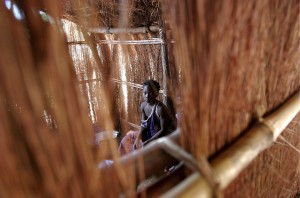The Central African Republic at a glance
Adversity in a Silent Crisis
The crisis in the Central African Republic (CAR) is practically unknown. As opposed to forgotten emergencies, it has never been in the limelight or received real attention. However, poverty, a ‘ghost’ state, and an internal conflict have left over 300,000 people displaced and one million – a quarter of the population – dependent on aid. The humanitarian response in the CAR has been unique. Despite its neglected crisis status, funding and involvement of international actors more than trebled in 2007. The challenges and costs posed by logistical and access problems – for example transport difficulties, dispersed beneficiaries and continuing insecurity – were significant constraint on the presence of implementing agencies and the effective delivery of aid.
However, the lack of donor and implementing agency interest and presence (‘supply’ and ‘demand’) led to the UN system adopting an innovative and critical leadership role. In fact, the UN Central Emergency Response Fund (CERF) was the main source of funding, encouraging organizations to establish a presence in CAR. Lessons for the implementation of the Good Humanitarian Donorship Principles can therefore be learnt from both the successes and failures of the response in the CAR and the complexity the context presents.

29 Mar 2007, Tale, Central African Republic --- A displaced sick girl from Central African Republic waiting for treatment in the straw-made consultation room at the Medicines Sans Frontier mobile clinic in Tale, in northern Central African Republic. At least 212 000 people are displaced as a result of the conflicts in northern Central African Republic where violence from Sudan has spilled over. --- Image by © PIERRE HOLTZ/epa/Corbis
Share this